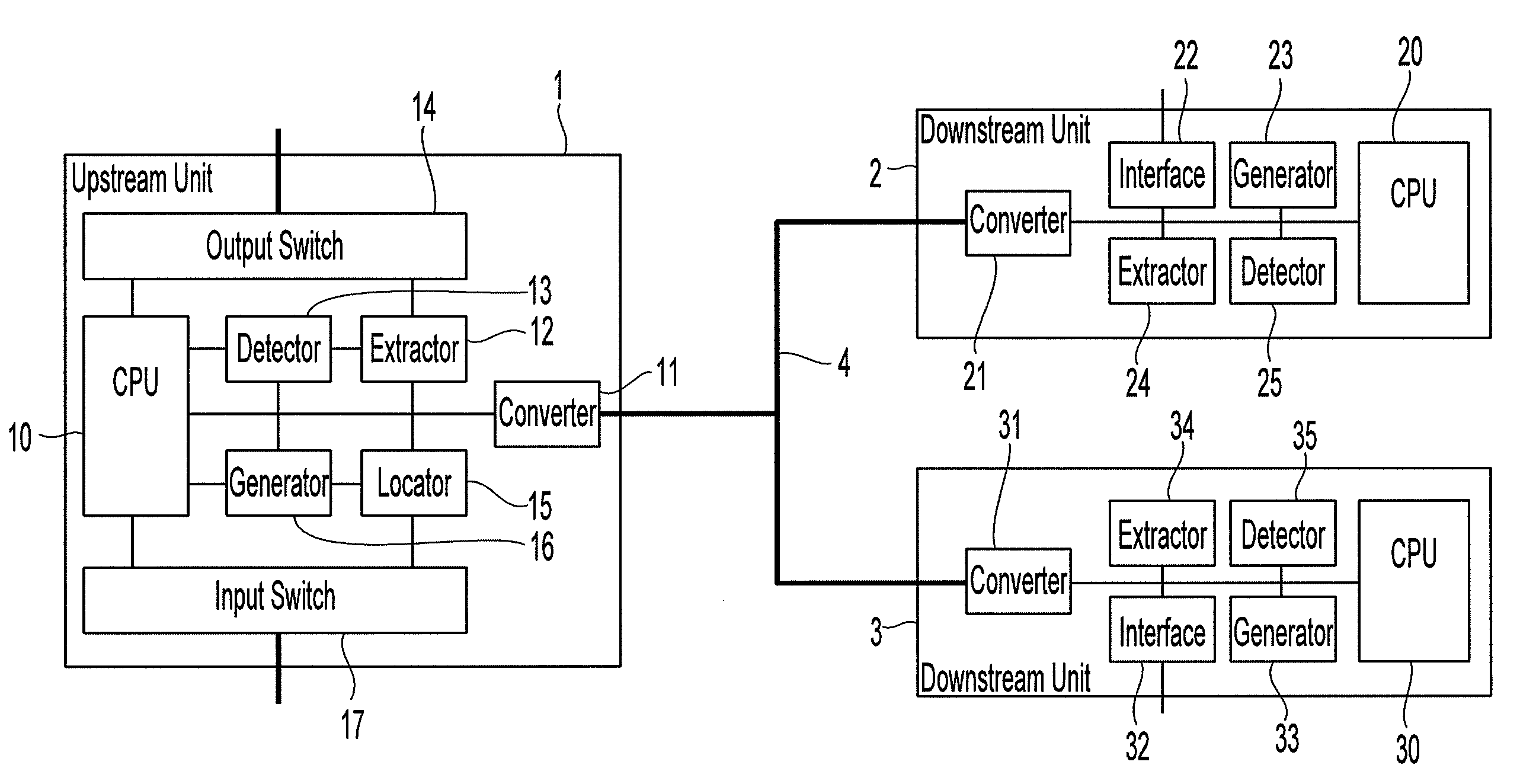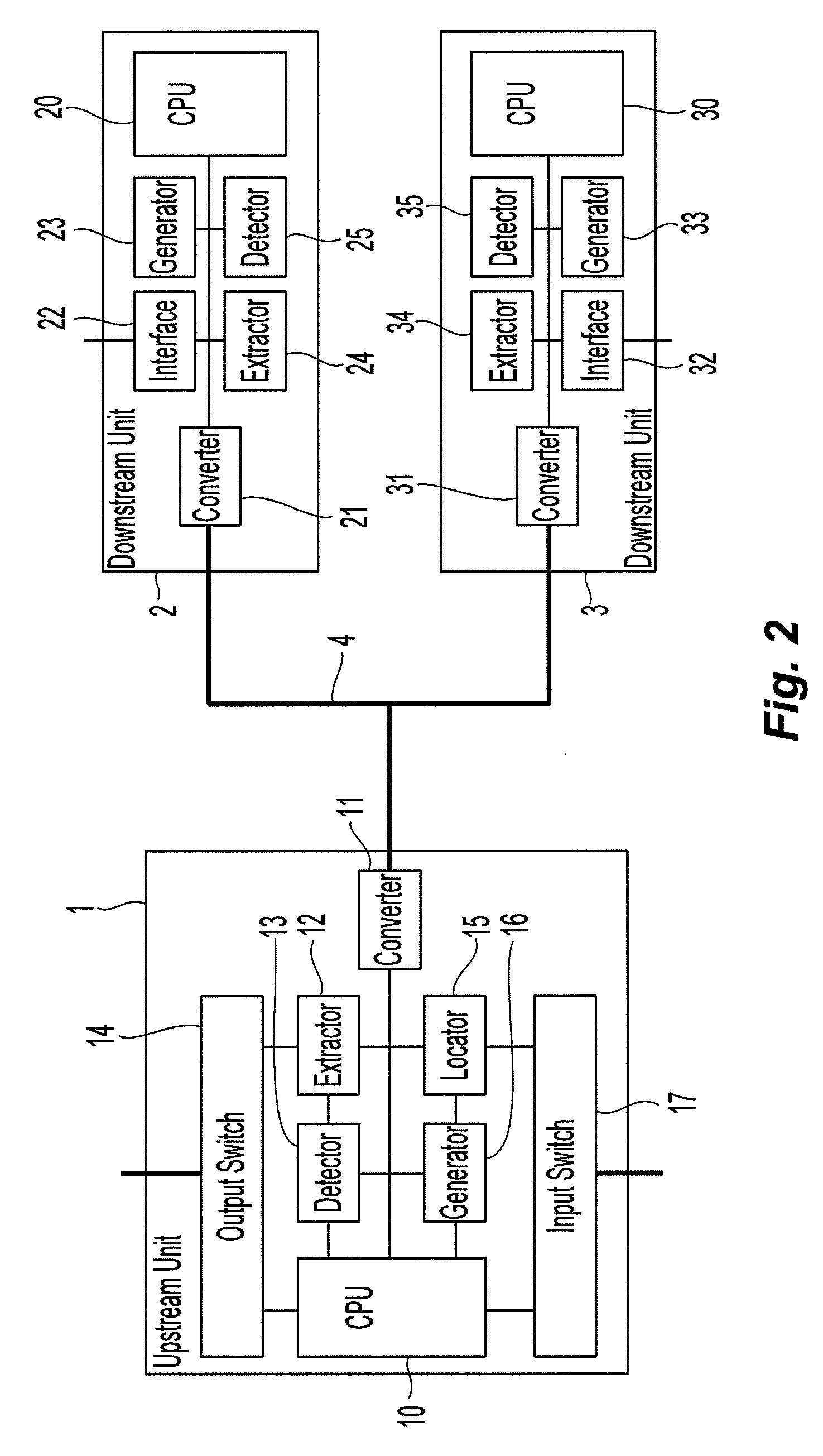Point-to-multipoint telecommunication system with downstream frame structure
a telecommunication system and frame structure technology, applied in the field of point-to-multi-point telecommunication systems, can solve the problems of segmentation adding extra overhead, delay variation, extra delays, etc., and achieve the effect of efficient structur
- Summary
- Abstract
- Description
- Claims
- Application Information
AI Technical Summary
Benefits of technology
Problems solved by technology
Method used
Image
Examples
Embodiment Construction
[0035]The three (downstream) signal frame structures shown in FIG. 1 disclose firstly a prior art (downstream) signal frame structure (above) in accordance with G.983.1 comprising one overhead cell (Physical Layer Operation and Maintenance or PLOAM) followed by 27 data cells (first number of data cells). In case of a downstream capacity of 155 Mbps, this frame comprises 56 cells of each 53 bytes. In case of a downstream capacity of 622 Mbps, this frame comprises 4×56 cells of each 53 bytes. Secondly, a (downstream) signal frame structure (middle) in accordance with the invention is disclosed comprising two overhead cells (PLOAM) followed by 54 data cells (second number of data cells). Thirdly, a (downstream) signal frame structure (under) in accordance with the invention is disclosed comprising n overhead cells (PLOAM) followed by m data cells (second number of data cells), with n for example being equal to 3 (or for example 4) and m for example being equal to 103 (or for example 10...
PUM
 Login to View More
Login to View More Abstract
Description
Claims
Application Information
 Login to View More
Login to View More - R&D
- Intellectual Property
- Life Sciences
- Materials
- Tech Scout
- Unparalleled Data Quality
- Higher Quality Content
- 60% Fewer Hallucinations
Browse by: Latest US Patents, China's latest patents, Technical Efficacy Thesaurus, Application Domain, Technology Topic, Popular Technical Reports.
© 2025 PatSnap. All rights reserved.Legal|Privacy policy|Modern Slavery Act Transparency Statement|Sitemap|About US| Contact US: help@patsnap.com



